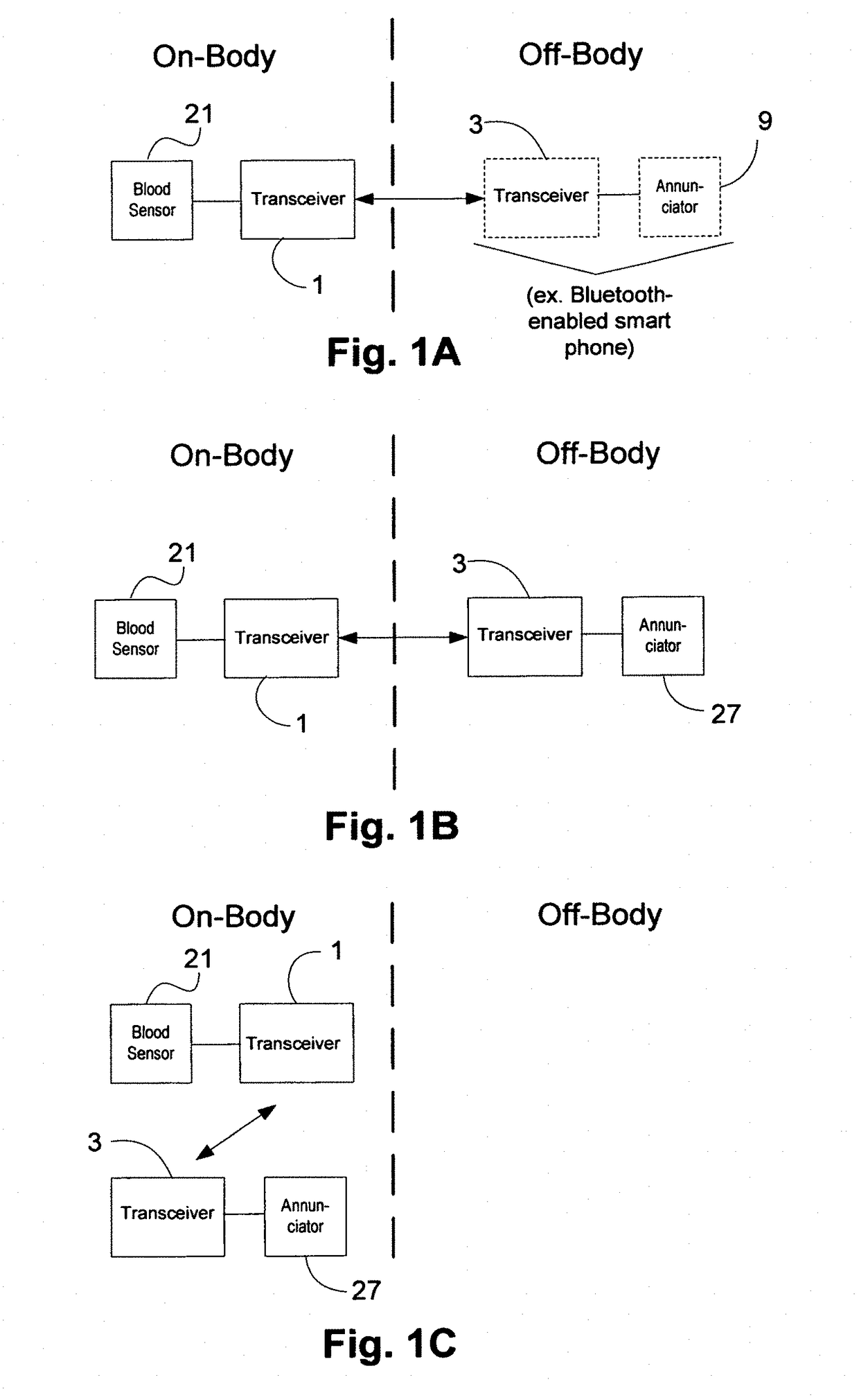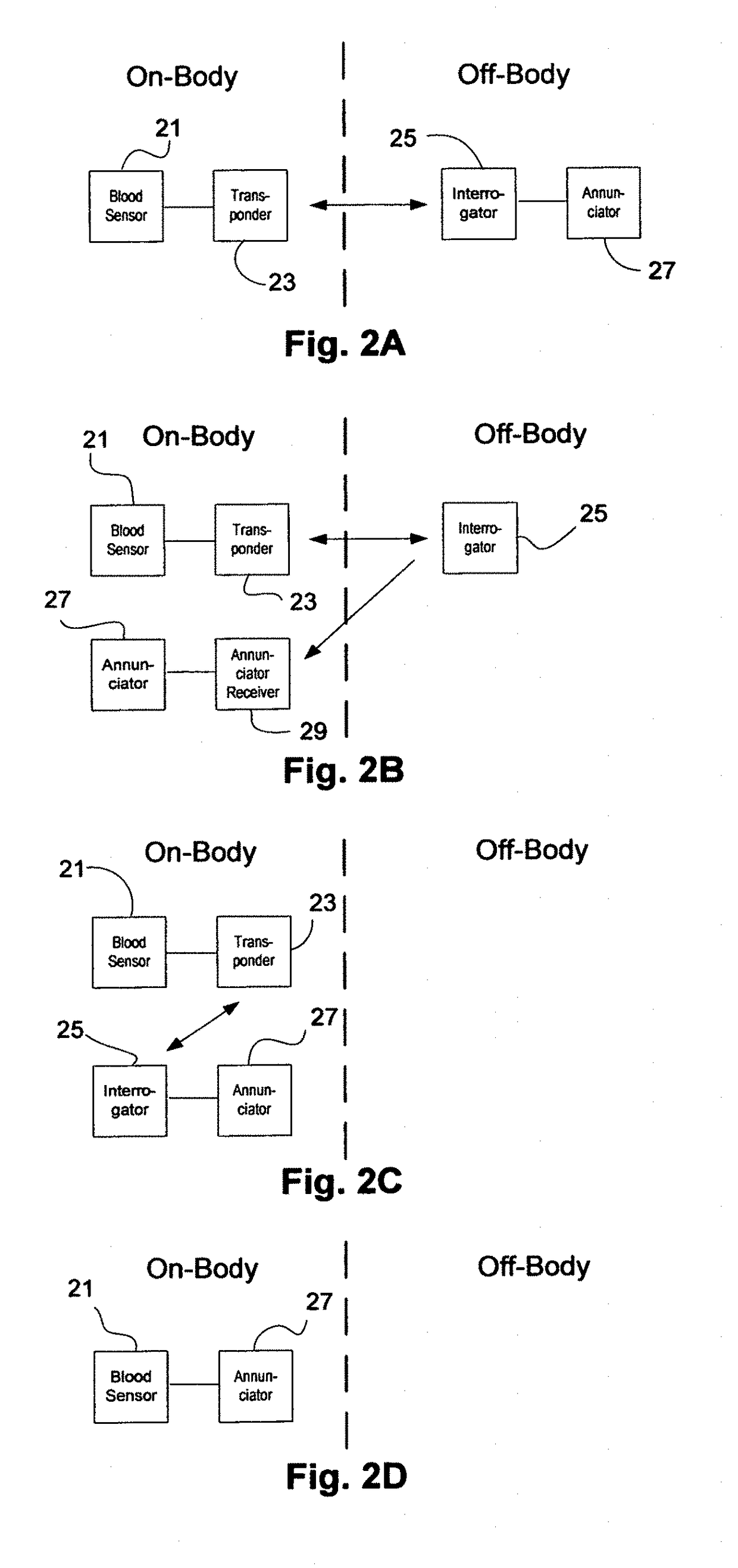Real-time blood detection system
a real-time detection and blood technology, applied in the field of real-time blood detection systems, can solve the problems that none of these innovations can be considered full proof means of preventing blood leakage, suffer the consequences, and women are faced with having to wear feminine hygiene products well, so as to achieve no sensation and easy installation
- Summary
- Abstract
- Description
- Claims
- Application Information
AI Technical Summary
Benefits of technology
Problems solved by technology
Method used
Image
Examples
example implementations
and Link Budget
[0168]Reference is made to channel propagation models for body surface to body surface non-line-of-sight (NLOS) propagation. These models have been developed by the IEEE Working Group for Wireless Personal Area Networks (WPANs) to address the needs of Body Area Networks development.
[0169]The document “IEEE P802.15-08-0780-09-0006” summarizes the activities and recommendations of the channel modeling subgroup of IEEE802.15.6 (Body Area Network). This guidance is developed for Body Area Networks relating to medical and non-medical devices that could be placed inside or on the surface of human body. The results of theoretical studies and measurement campaigns are provided therein. Path loss and fading models resulting from this work are summarized in the table below for candidate transmission frequency bands comprising those that are unlicensed. Models are provided for the second harmonic frequencies as well. Channel calculations based on the models are used herein for t...
embodiment implementation
Preferred Embodiment Implementation
Transceiver Approach—Bluetooth LE
[0179]Bluetooth Low Energy offers a number of features that are advantageous for the presently disclosed system, i.e. use of a widely adopted standards (IEEE and Bluetooth Special Interest Group), low power consumption, security (including pairing and bonding of devices), low cost chip implementations, and widespread embedding in consumer devices including smart phones.
[0180]Performance Indicates very low battery drain for a sensor reporting application analysis (C. Gomez, J. Oiler, and J. Paradells, “Overview and Evaluation of Bluetooth Low Energy: an Emerging Low-Power Wireless Technology,” Sensors, 2012, 12, 11734-11753). In the cited analysis, a sensor-connected transceiver (slave) responds to polling from the master transceiver at fixed intervals. The following link parameters are assumed:
Transmit power set to 0 dBm (5 mA current drain)
[0181]Antenna gain of special body-mounted antenna =0 dB (with associated pr...
second example
[0188]An example beacon system comprises use of a low cost, low current transmitter such as the Si4012. The transmitter chip would require minimal circuitry for interface to impedimetric, amperometric, or potentiometric sensors. A good candidate beacon receiver is the Si4362 with a sensitivity of −126 dBm.
[0189]Sensor Interface with Communication Devices
[0190]For amperometric sensors, typically a transimpedance amplifier is used to convert the current signal to a voltage signal. For impedimetric sensors, a factor of ten increase in impedance swing is achievable with an impedance multiplier circuit as is well known in the prior art. The impedance variation can be transduced to a voltage signal using a Wheatstone bridge or voltage divider with instrumentation amplifier.
[0191]Alert-type sensor outputs which are indicative of blood presence will be signals that broach a threshold. If they are current or impedance signals, they can be transduced to voltage signals for direct analog or di...
PUM
| Property | Measurement | Unit |
|---|---|---|
| thick | aaaaa | aaaaa |
| electrically conductive | aaaaa | aaaaa |
| electrical impedance | aaaaa | aaaaa |
Abstract
Description
Claims
Application Information
 Login to View More
Login to View More - R&D
- Intellectual Property
- Life Sciences
- Materials
- Tech Scout
- Unparalleled Data Quality
- Higher Quality Content
- 60% Fewer Hallucinations
Browse by: Latest US Patents, China's latest patents, Technical Efficacy Thesaurus, Application Domain, Technology Topic, Popular Technical Reports.
© 2025 PatSnap. All rights reserved.Legal|Privacy policy|Modern Slavery Act Transparency Statement|Sitemap|About US| Contact US: help@patsnap.com



